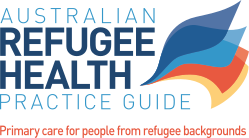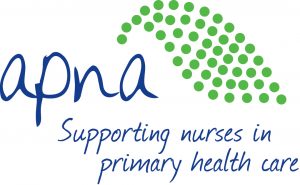
Skin Infections
Kasha Singh, Rebecca Dunn, Gillian Singleton, Georgia Paxton
Recommendations
- The skin should be examined as part of the initial physical examination.
- Management will depend on findings; differential diagnoses will depend on area of origin.
Overview
Skin infections may be common in some groups of people from refugee-like backgrounds. There are limited prevalence data, but skin complaints were the sixth most frequent problem amongst newly arrived African refugee patients less than 15 years old in Melbourne in 2005, affecting 10% of patients in that group.108
Non-infectious conditions may have skin manifestations (e.g. nutrient deficiency, inflammatory conditions (eczema/dermatitis), insect bites, pigmentation changes (vitiligo, post inflammatory hypo/hyperpigmentation), psychodermatoses, medication side effects). Also consider skin manifestations of traditional medicine procedures (cupping, coining) and scars from injury or torture.
Common rashes and skin infections may have a different appearance in dark skin compared to light skin. Erythema may be subtle or not visible in dark skin.
The following table lists skin presentations, and outlines infectious and other diagnoses to consider along with associated findings, investigations and management.219,220 Many of these diagnoses are extremely rare; they are included as a reference base for this reason. Inspection of skin is part of routine post arrival health screening examination. Investigations are guided by the clinical presentation.
Key points to note with drug treatment are:
- Albendazole is pregnancy category D – exclude pregnancy prior to use and provide advice about contraception prior to therapy. Dosage for albendazole changes for young children (200mg for patients >6months and <10kg).
- Ivermectin is not used in children <15kg and is relatively contraindicated in pregnancy (category B3).
- Griseofulvin is only used in children >2years and is relatively contraindicated in pregnancy (category B3).
See Table 11.1: Skin Infections for further detail on diagnosis and treatment of common skin infections
Management
(A) Scabies: therapy details
>6 months old:
permethrin 5% cream to dry skin from the neck down especially hands, genitalia; apply under nails with a nailbrush.
Note- In central and northern Australia and in infants and the elderly, scabies above the neck is common and in these populations treatment should also be applied to face and hair (avoiding eyes and mucous membranes).
Leave for >8 hours (e.g. overnight) or 24 hours if previous treatment failure. Reapply to hands if washed. Repeat in 7 days.
OR
benzyl benzoate 25% emulsion (if allergic/permethrin failure) – apply as per permethrin for 24 hours.
For children dilute prior to application 6 months-2 years 1:3 parts water; 2 years-12 years 1:1 part water; If skin irritation occurs in adults dilute as for child 2-12 years.
OR
consider oral ivermectin for crusted scabies and/or treatment in immunocompromised or for treatment of widespread infection in crowded institutional settings.
<6months old:
permethrin is not approved in this age group but this must be balanced against the morbidity of untreated scabies, therefore recommended treatment is: permethrin 5% to entire body (including scalp but not eyes/mouth); Cover hands (e.g. mittens) so child doesn’t suck medication. Leave 8 hours. Repeat in 7 days.
OR
sulphur 10% in white soft paraffin (<2months: sulphur 5% in white, soft paraffin) topically, once daily 2-3 days
OR
crotamiton 10% cream topically daily 2-3 days.
During pregnancy/breastfeeding: permethrin 5% cream is the recommended treatment
(B) Tinea: diagnosis and management
Confirm diagnosis by microscopy and culture prior to treatment with antifungals, particularly systemic agents. Diagnostic samples include skin scrapings, subungual debris, clipped nail or plucked hair. False negative results are common especially with nail clippings due to insufficient specimens, recent antifungals and overgrowth. A trial of therapy may be appropriate.
Topical therapy is appropriate for localized infection (body, limbs, face, interdigital) with: terbinafine 1% cream/gel daily 1 week
OR bifonazole 1% daily 2-3 weeks
OR clotrimazole 1% bd for 2-4 weeks (continue 2 weeks after symptoms resolve)
OR econazole 1% bd continued 7 days after symptoms resolve
OR ketoconazole 2% topically daily continued 14 days after symptoms resolve
OR miconazole 2% bd for 4 weeks.
Use oral therapy for tinea capitis, palmar or solar tinea or if widespread, unresponsive to topical therapy, recurrent or previously treated with steroids. Tinea unguium usually requires oral treatment.
>40kg: Terbinafine 250mg daily OR fluconazole 150mg once weekly OR itraconazole 200mg oral, twice daily for 1 week (feet/hands) or daily for 1 week (elsewhere). Continue until clinical resolution (2-6 week course).
20-40kg: Terbinafine 125mg/d 2-4 weeks OR Itraconazole 3-5mg/kg daily 4-6 weeks OR fluconazole 6mg/kg/day for 3-6 weeks.
10-20kg: Terbinafine 62.5mg daily 2-4 weeks
Alternatively: Griseofulvin 20-25mg/kg/day for 6-12 weeks.




